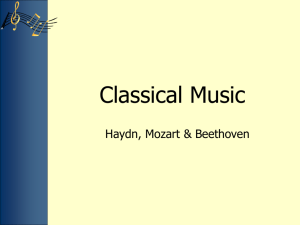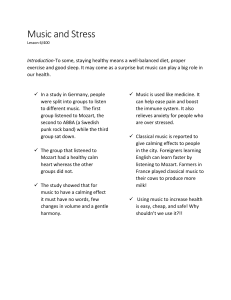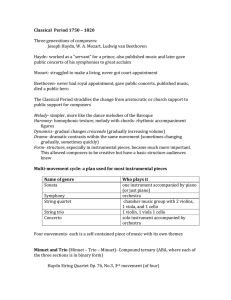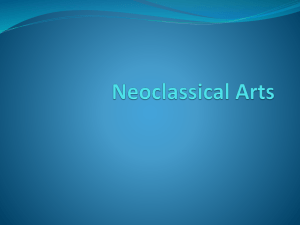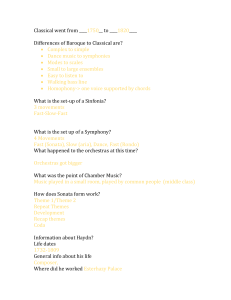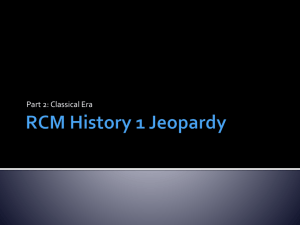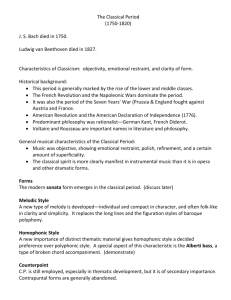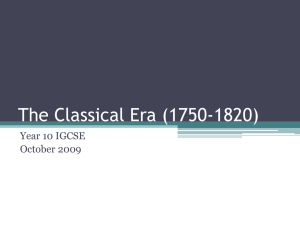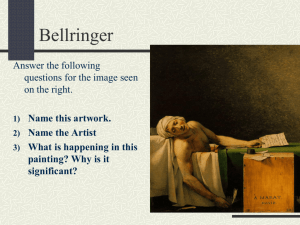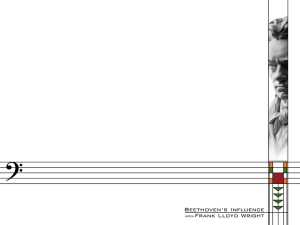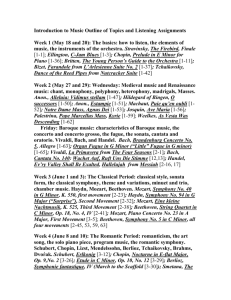Classical Period Music Quiz Key - MUS 1000
advertisement
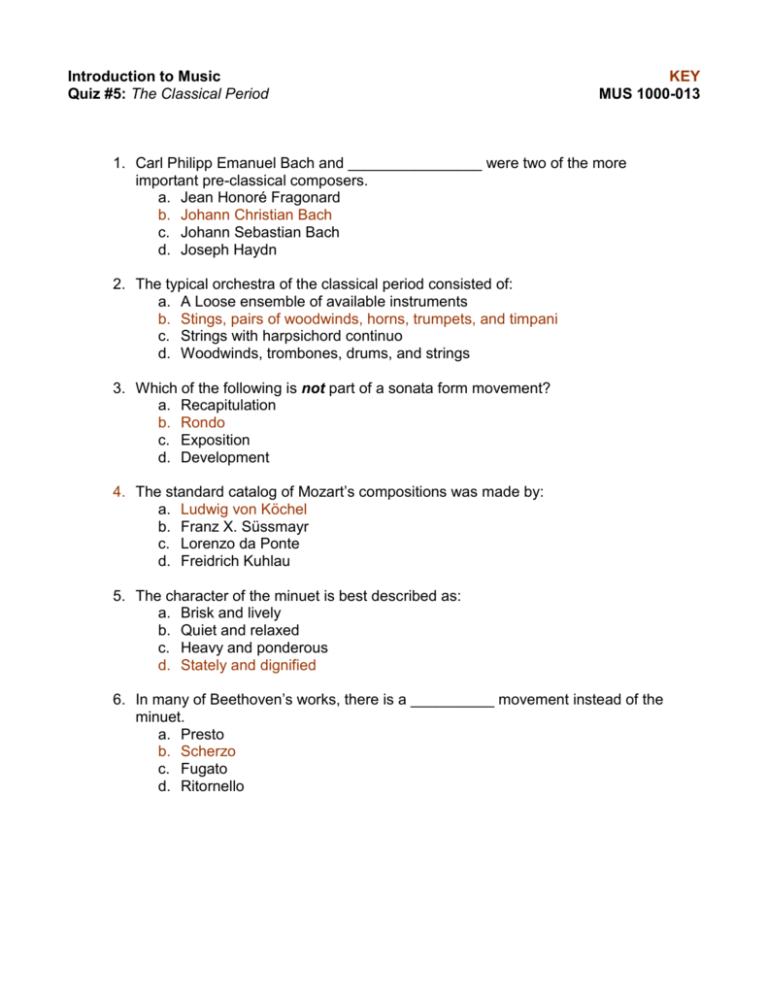
Introduction to Music Quiz #5: The Classical Period KEY MUS 1000-013 1. Carl Philipp Emanuel Bach and ________________ were two of the more important pre-classical composers. a. Jean Honoré Fragonard b. Johann Christian Bach c. Johann Sebastian Bach d. Joseph Haydn 2. The typical orchestra of the classical period consisted of: a. A Loose ensemble of available instruments b. Stings, pairs of woodwinds, horns, trumpets, and timpani c. Strings with harpsichord continuo d. Woodwinds, trombones, drums, and strings 3. Which of the following is not part of a sonata form movement? a. Recapitulation b. Rondo c. Exposition d. Development 4. The standard catalog of Mozart’s compositions was made by: a. Ludwig von Köchel b. Franz X. Süssmayr c. Lorenzo da Ponte d. Freidrich Kuhlau 5. The character of the minuet is best described as: a. Brisk and lively b. Quiet and relaxed c. Heavy and ponderous d. Stately and dignified 6. In many of Beethoven’s works, there is a __________ movement instead of the minuet. a. Presto b. Scherzo c. Fugato d. Ritornello 7. The rondo may be schematically outlined as: a. ABACABA b. AABB c. ABBABC d. ABA 8. Symphony may be defined as a(n): a. Musical composition for orchestra, usually in four movements b. Sonata for orchestra c. Extended, ambitious composition exploiting the expanded range of tone color d. All of the above 9. The first movement of a classical symphony is almost always fast, and in _________ form. a. Sonata b. Rondo c. Minuet d. ABA 10. The lyrical slow movement of a symphony is most often the: a. First movement b. Second movement c. Third movement d. Fourth movement 11. Mozart and Beethoven wrote a number of concertos for their favorite solo instrument, the: a. Cello b. Violin c. Flute d. Piano 12. Classical chamber music is designed: a. To display the virtuosity of the players b. For the intimate setting of a small room c. Exclusively for performance by paid professional musicians d. To be conducted by experienced orchestral directors 13. The most important form of classical chamber music is the: a. Violin and piano sonata b. String quintet c. Piano trio d. String quartet 14. The piano trio is a musical composition for: a. Three Pianos b. Violin and Piano c. Violin, Cello, and Piano d. All of the above 15. Along with his symphonies, Haydn’s ___________ are considered his most important works. a. Operas b. String quartets c. Baryton trios d. Serenades 16. Which of the following statements is not true? a. Mozart wrote masterpieces in all the musical forms of his time b. Between the ages of six and fifteen, Mozart was continually on tour in England and Europe. c. In his later years, Mozart was financially well off, widely acclaimed, and sought after by an adoring public. d. Mozart’s trips to Italy enabled him to study and master the current operatic style. 17. Mozart composed his Requiem: a. For his own funeral b. As an exercise for his composition teacher c. On commission from a stranger d. To help his pupil Süssmayr 18. What was Wolfgang Mozart’s middle name? Amadeus 19. The musical heir of Haydn and Mozart, Beethoven bridged the __________ and _____________ periods. a. Renaissance, baroque b. Baroque, classical c. Classical, romantic d. Romantic, impressionist 20. The choral finale of Beethoven’s Ninth Symphony is based on: a. Dante’s Inferno b. Shakespeare’s Midsummer Night’s Dream c. Schiller’s Ode to Joy d. Shelley’s Ode to the West Wind Bonus: Identify the composer and composition playing on the stereo during the exam. Mozart: Eine Kleine Nacht Musik
